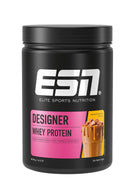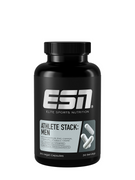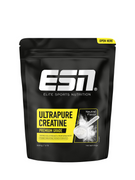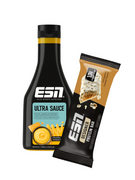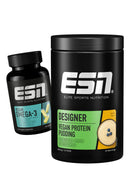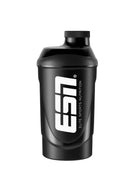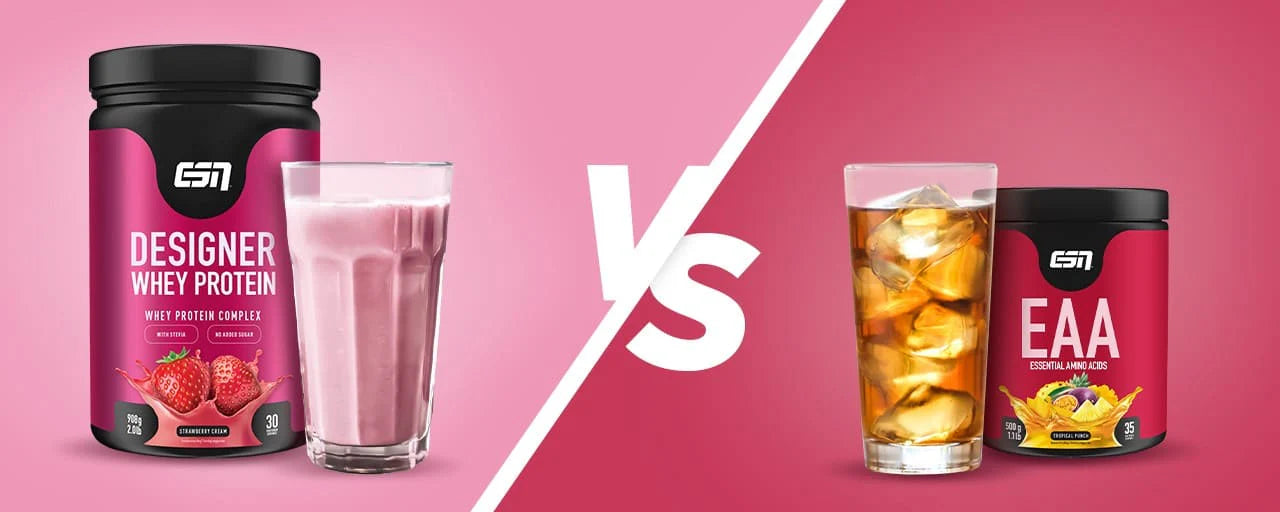Essentielle Aminosäuren (EAAs) vs. Whey Protein
Je mehr Sportler sich mit dem Thema Training und Muskelaufbau beschäftigen und erste Erfolge erzielen, desto mehr informieren sie sich auch über die Ernährung und die Supplements, die für ihre Sportart oder ihre Ziele geeignet sind. Ob Whey Protein Isolat und Hydrolysat oder EAAs und BCAAs, veganes Protein oder Proteinpulver mit Casein – die Auswahl ist groß. Genauso vielfältig sind die Informationen und Fragestellungen, die es zu einzelnen Produkten gibt. So polarisiert ebenso wie die Frage „BCAAs oder Whey Protein“, auch das Thema, ob gezielt nur essentielle Aminosäuren, die „EAAs“, statt Whey Protein eingenommen werden sollten.
Was sind EAAs?
EAA steht für „Essential Amino Acids“, also essentielle Aminosäuren. Aminosäuren sind kleine Eiweiß-Bausteine. Essentiell sind sie, weil der Körper sie benötigt, aber nicht selbst herstellen kann. Im Bereich des Kraftsports interessieren sich Sportler besonders für Valin, Leucin und Isoleucin, die eine wichtige Rolle beim Muskelaufbau spielen.
EAA-Supplements enthalten somit also nur essentielle Aminosäuren, die der Körper nicht selbst produzieren kann.
Viele Menschen sind mit dem Begriff „Aminosäuren" nicht allzu vertraut, sondern konzentrieren sich nur auf die Aufnahme von Eiweiß für den Muskelaufbau. Aber was ist Eiweiß eigentlich genau? Proteine bzw. Eiweiße bestehen aus kleineren Bausteinen, den Aminosäuren. Es gibt insgesamt 20 verschiedene Aminosäuren, acht davon sind essentiell – das bedeutet, sie können nicht vom Körper selbst hergestellt werden. Um die Versorgung damit zu sichern, müssen sie über die Nahrung zugeführt werden.
Das sind die acht essentiellen Aminosäuren:
- Isoleucin
- Leucin
- Lysin
- Methionin
- Phenylalanin
- Threonin
- Tryptophan
- Valin
Die EAAs können beispielsweise aus Whey oder anderen vollwertigen Proteinen aufgenommen werden. Nimmt man jedoch einzelne EAAs zu sich, müssen diese nicht mehr weiter verstoffwechselt werden. Das heißt, sie können sehr schnell weitertransportiert werden und ihre Wirkung in der Muskulatur entfalten. Eine Whey Alternative, die ähnlich wirkt, ist Whey Protein Hydrolysat. Für das Hydrolysat werden die Eiweiße in Peptide gespalten – dadurch kann es ebenfalls relativ schnell auf den Körper wirken.
EAA ist nicht mit BCAA (Branched-Chain Amino Acid) zu verwechseln. BCAAs enthalten lediglich drei von acht essentiellen Aminosäuren, während EAAs alle für die Muskelzelle wichtigen Aminosäuren enthalten.
Was ist der Unterschied zwischen Whey Protein und EAAs?
Proteine und Aminosäuren sind nicht das gleiche. Eine Aminosäure ist der kleinste Baustein eines Proteins. Während das vollwertige Whey Protein essentielle und nicht-essentielle Eiweiß-Bausteine enthält, beinhalten Supplements mit EAAs alle essentiellen Aminosäuren. Das bedeutet, ein Protein Shake oder Supplement mit Whey enthält mehr Protein als ein EAA-Supplement, je nach Zusammensetzung aber etwas weniger essentielle Aminosäuren.
Was haben EAAs und Whey gemeinsam?
Sowohl Whey Protein als auch Supplements mit EAAs enthalten alle essentiellen Aminosäuren. Wer Whey und/oder EAAs in seine Ernährung integriert, kann sich sicher sein, dass er die für die Proteinsynthese wichtigen Aminosäuren Isoleucin, Valin und Leucin zu sich nimmt.
EAAs oder Whey? Es kommt auf deine Ziele an!
Eine Frage, die im Kontext von Krafttraining häufig gestellt wird, ist, ob man für die Regeneration beim Muskelaufbau EAAs statt Whey supplementieren sollte. Auf diese Frage gibt es jedoch keine richtige oder falsche Antwort, vielmehr kommt es auf die Situation des Einzelnen an. Vollwertige Proteine wie Whey haben zudem ebenso ihre Vor- und Nachteile wie EAAs.
Du möchtest einen schlankeren Körper
Wer vor allem Fettreserven im Körper abbauen möchte, sollte sich mit dem Thema Kalorienaufnahme beschäftigen. Das Problem bei der Kalorienreduktion: Sie kann zur Folge haben, dass auch fettfreie Körpermasse abgebaut wird. Das bedeutet, dass auch die Muskelzellen abnehmen, nicht nur das Körperfett.[¹]
EAAs sind kalorienarm und verhindern gleichzeitig Muskelabbau, sodass effektiver Fett abgebaut wird.[²] Ein Unterschied zwischen den beiden Aminosäurelieferanten liegt in der Anzahl der Kalorien: Whey enthält pro Portion (30 Gramm) circa 120 Kalorien, EAAs mit 14 Gramm pro Portion nur 50 Kalorien. Du kannst zwar auch mit Whey Protein die Versorgung der Muskulatur unterstützen, nimmst dann aber mehr Kalorien zu dir, was für die Verdauung sowie die Aufnahme in die Muskelzellen mehr Zeit beansprucht.[³]
Dein Ziel ist Muskelaufbau
Wer Muskeln aufbauen möchte, benötigt einen Überschuss an Kalorien in der Ernährung und die Zufuhr genügend geeigneter Aminosäuren – sie sind wichtig für die Muskelproteinsynthese sowie die Regeneration beim Muskelaufbau.[⁴] [⁵] EAAs sind der schnellste Weg, um Aminosäuren zu den Muskelzellen zu bringen, denn Whey Protein muss im Gegensatz zu EAAs erst verstoffwechselt werden.
Einzelne Aminosäuren liegen bei EAAs getrennt vor, sind nicht aneinandergebunden und gelangen quasi ohne Verzögerung in die Muskulatur. Allerdings haben sie weniger Kalorien, sodass dies an anderer Stelle in der Ernährung ausgeglichen werden muss. Whey Protein führt zu einer im Vergleich mit EAA langsameren Freisetzung, enthält aber auch mehr Kalorien, die für das Ziel des Muskelaufbaus entscheidend sind. Der Kalorienbedarf ist mit Whey Protein einfacher zu decken.
Bei der häufig zitierten Frage „EAAs vs. Whey Protein“ in Zusammenhang mit dem Muskelaufbau gibt es also keine klare Antwort, beide Aminosäurelieferanten tragen zur Muskelproteinsynthese bei. Sowohl Whey Protein, als auch EAAs sind also sinnvoll, wenn du deine Muskelproteinsynthese anregen möchtest.
Du möchtest etwas für deine Gesundheit tun
Unter Umständen ist bei manchen Menschen die Proteinzufuhr nicht gesichert, z. B. bei Sportlern, die sich vegan ernähren. Dabei ist gerade die Versorgung mit den essentiellen Aminosäuren für den menschlichen Körper wichtig.
Zwar kann man sowohl mit Whey Protein als auch mit einem EAA Supplement die Zufuhr sichern, allerdings kommt Whey für Menschen, die sich rein pflanzlich ernähren oder laktoseintolerant sind, nicht in Frage. Hier kann ein EAA-Produkt supplementiert werden.
Fazit: Whey Protein oder EAAs – du entscheidest selbst
Auch wenn oft von einem Wettbewerb zwischen Whey Protein vs. EAAs zu lesen ist, können wir festhalten, dass Whey und EAAs sowohl Unterschiede als auch viele Gemeinsamkeiten haben. Beide Aminosäurelieferanten haben ihren Nutzen mit unterschiedlichen Vor- und Nachteilen. Ob Whey Proteinpulver oder ein EAA Supplement die richtige Wahl ist, hängt vom Sportler und seinen persönlichen Zielen ab. Studien haben auch gezeigt, dass gerade eine Kombination der Einnahme von einzelnen EAAs und Whey Protein eine positive Wirkung auf die Proteinsynthese der Muskelzelle haben kann.[⁶]
Letztendlich ist es auch eine Frage des Geschmacks: Ein Whey Protein Shake ist cremig wie ein Milkshake, während ein EAA-Drink eher erfrischend leicht wie ein Softdrink schmeckt. Wichtig ist, dass du bei beiden Produkten auf eine hervorragende Qualität achtest, damit z. B. bei Whey Proteinpulver auch ein angemessener Anteil an reinem Protein gesichert ist.
Quellen:
[1] https://pubmed.ncbi.nlm.nih.gov/30513859/
[2] https://pubmed.ncbi.nlm.nih.gov/28642676/
[3] https://academic.oup.com/nutritionreviews/article/68/7/375/1821484
[4] https://journals.physiology.org/doi/full/10.1152/ajpendo.00466.2001
[5] https://academic.oup.com/ajcn/article/78/2/250/4689932
[6] https://jissn.biomedcentral.com/articles/10.1186/s12970-020-0340-5
